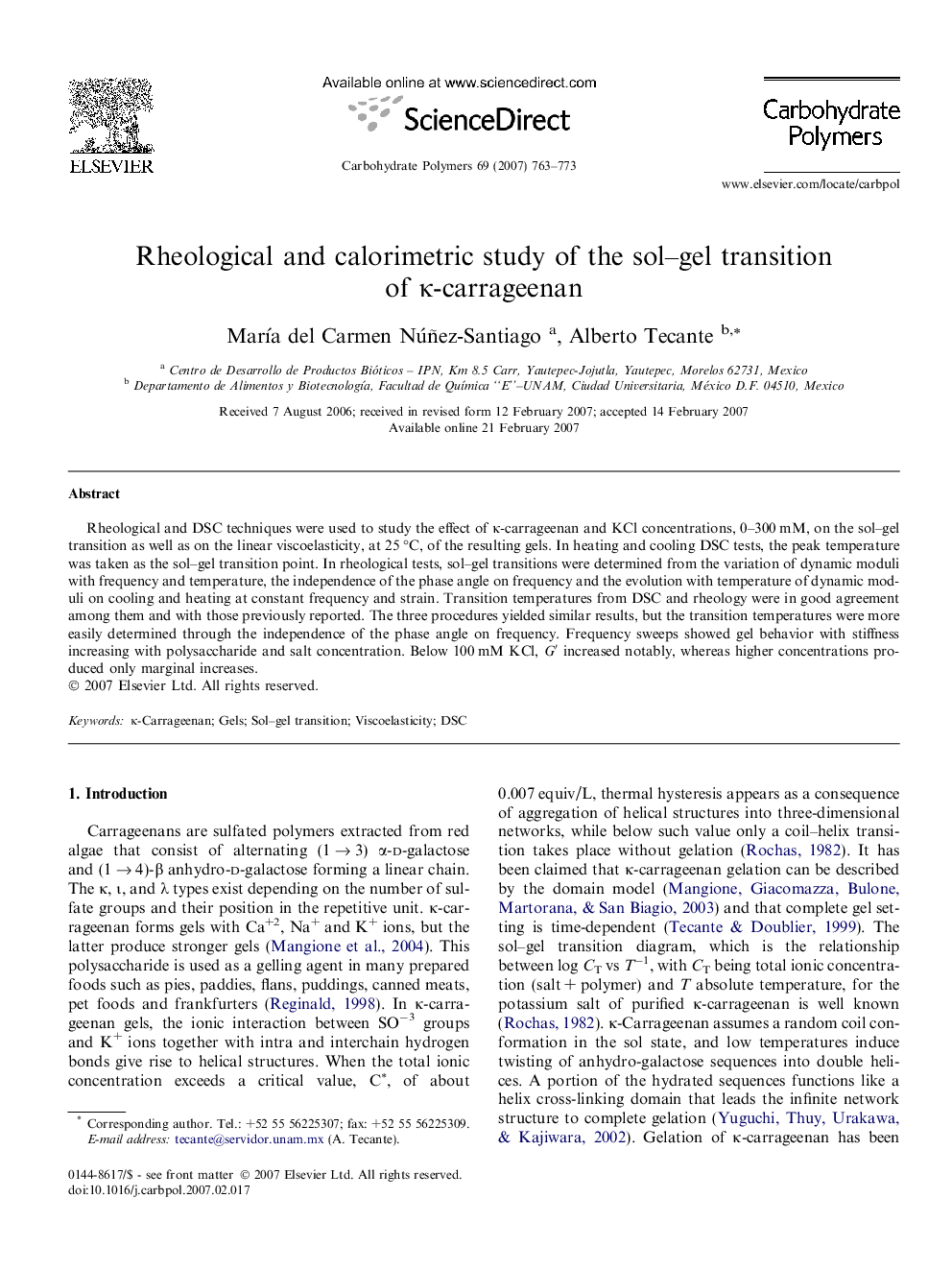| Article ID | Journal | Published Year | Pages | File Type |
|---|---|---|---|---|
| 1385255 | Carbohydrate Polymers | 2007 | 11 Pages |
Rheological and DSC techniques were used to study the effect of κ-carrageenan and KCl concentrations, 0–300 mM, on the sol–gel transition as well as on the linear viscoelasticity, at 25 °C, of the resulting gels. In heating and cooling DSC tests, the peak temperature was taken as the sol–gel transition point. In rheological tests, sol–gel transitions were determined from the variation of dynamic moduli with frequency and temperature, the independence of the phase angle on frequency and the evolution with temperature of dynamic moduli on cooling and heating at constant frequency and strain. Transition temperatures from DSC and rheology were in good agreement among them and with those previously reported. The three procedures yielded similar results, but the transition temperatures were more easily determined through the independence of the phase angle on frequency. Frequency sweeps showed gel behavior with stiffness increasing with polysaccharide and salt concentration. Below 100 mM KCl, G′ increased notably, whereas higher concentrations produced only marginal increases.
